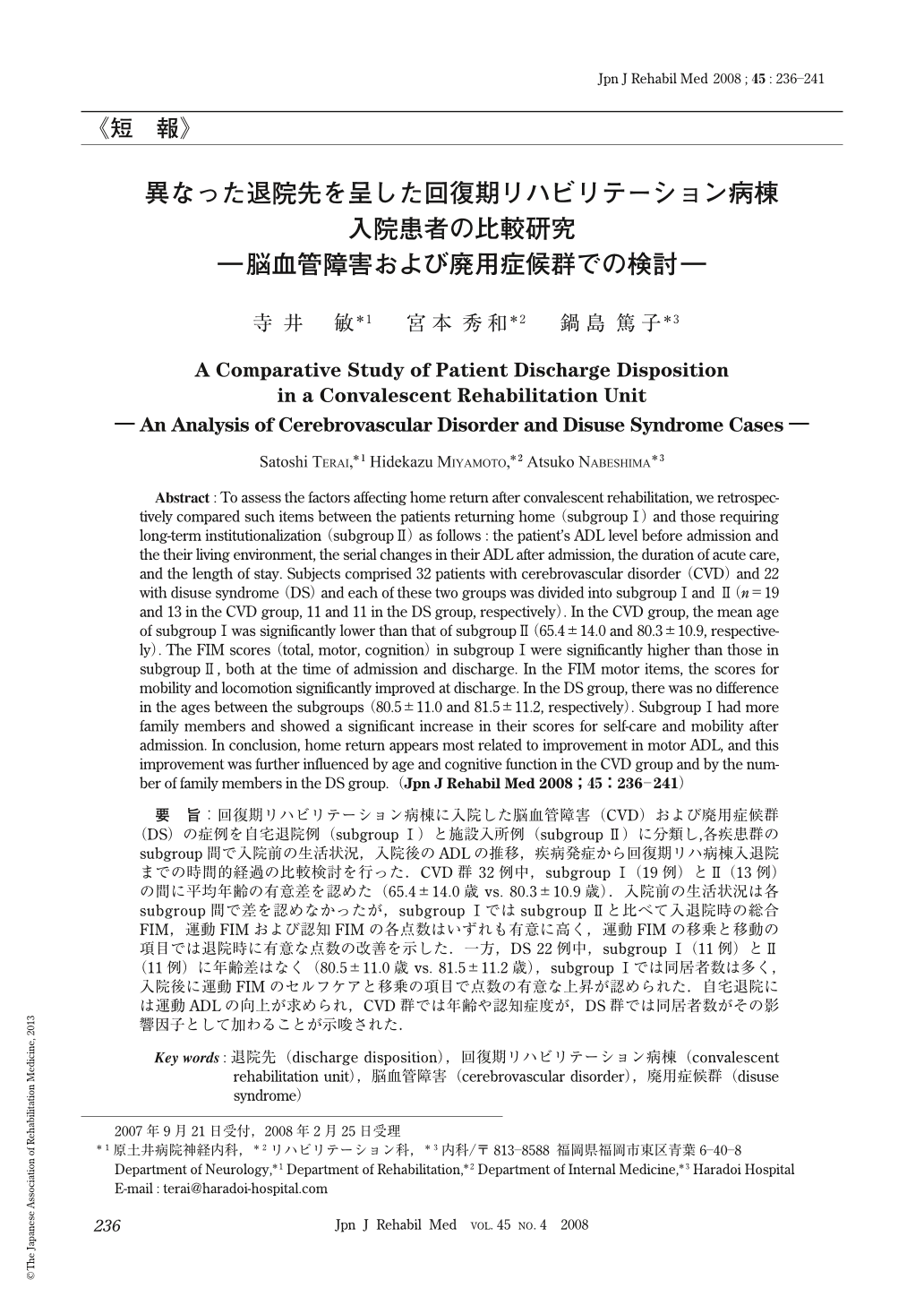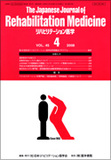Japanese
English
- 販売していません
- Abstract 文献概要
- 1ページ目 Look Inside
- 参考文献 Reference
要旨:回復期リハビリテーション病棟に入院した脳血管障害(CVD)および廃用症候群(DS)の症例を自宅退院例(subgroup Ⅰ)と施設入所例(subgroup Ⅱ)に分類し,各疾患群のsubgroup間で入院前の生活状況,入院後のADLの推移,疾病発症から回復期リハ病棟入退院までの時間的経過の比較検討を行った.CVD群32例中,subgroup Ⅰ(19例)とⅡ(13例)の間に平均年齢の有意差を認めた(65.4±14.0歳vs.80.3±10.9歳).入院前の生活状況は各subgroup間で差を認めなかったが,subgroup Ⅰではsubgroup Ⅱと比べて入退院時の総合FIM,運動FIMおよび認知FIMの各点数はいずれも有意に高く,運動FIMの移乗と移動の項目では退院時に有意な点数の改善を示した.一方,DS22例中,subgroup Ⅰ(11例)とⅡ(11例)に年齢差はなく(80.5±11.0歳vs.81.5±11.2歳),subgroup Ⅰでは同居者数は多く,入院後に運動FIMのセルフケアと移乗の項目で点数の有意な上昇が認められた.自宅退院には運動ADLの向上が求められ,CVD群では年齢や認知症度が,DS群では同居者数がその影響因子として加わることが示唆された.
Abstract : To assess the factors affecting home return after convalescent rehabilitation, we retrospectively compared such items between the patients returning home (subgroupⅠ) and those requiring long-term institutionalization (subgroupⅡ) as follows : the patient's ADL level before admission and the their living environment, the serial changes in their ADL after admission, the duration of acute care, and the length of stay. Subjects comprised 32 patients with cerebrovascular disorder (CVD) and 22 with disuse syndrome (DS) and each of these two groups was divided into subgroupⅠand Ⅱ (n=19 and 13 in the CVD group, 11 and 11 in the DS group, respectively). In the CVD group, the mean age of subgroupⅠwas significantly lower than that of subgroupⅡ (65.4±14.0 and 80.3±10.9, respectively). The FIM scores (total, motor, cognition) in subgroupⅠwere significantly higher than those in subgroupⅡ, both at the time of admission and discharge. In the FIM motor items, the scores for mobility and locomotion significantly improved at discharge. In the DS group, there was no difference in the ages between the subgroups (80.5±11.0 and 81.5±11.2, respectively). SubgroupⅠhad more family members and showed a significant increase in their scores for self-care and mobility after admission. In conclusion, home return appears most related to improvement in motor ADL, and this improvement was further influenced by age and cognitive function in the CVD group and by the number of family members in the DS group.

Copyright © 2008, The Japanese Association of Rehabilitation Medicine. All rights reserved.


